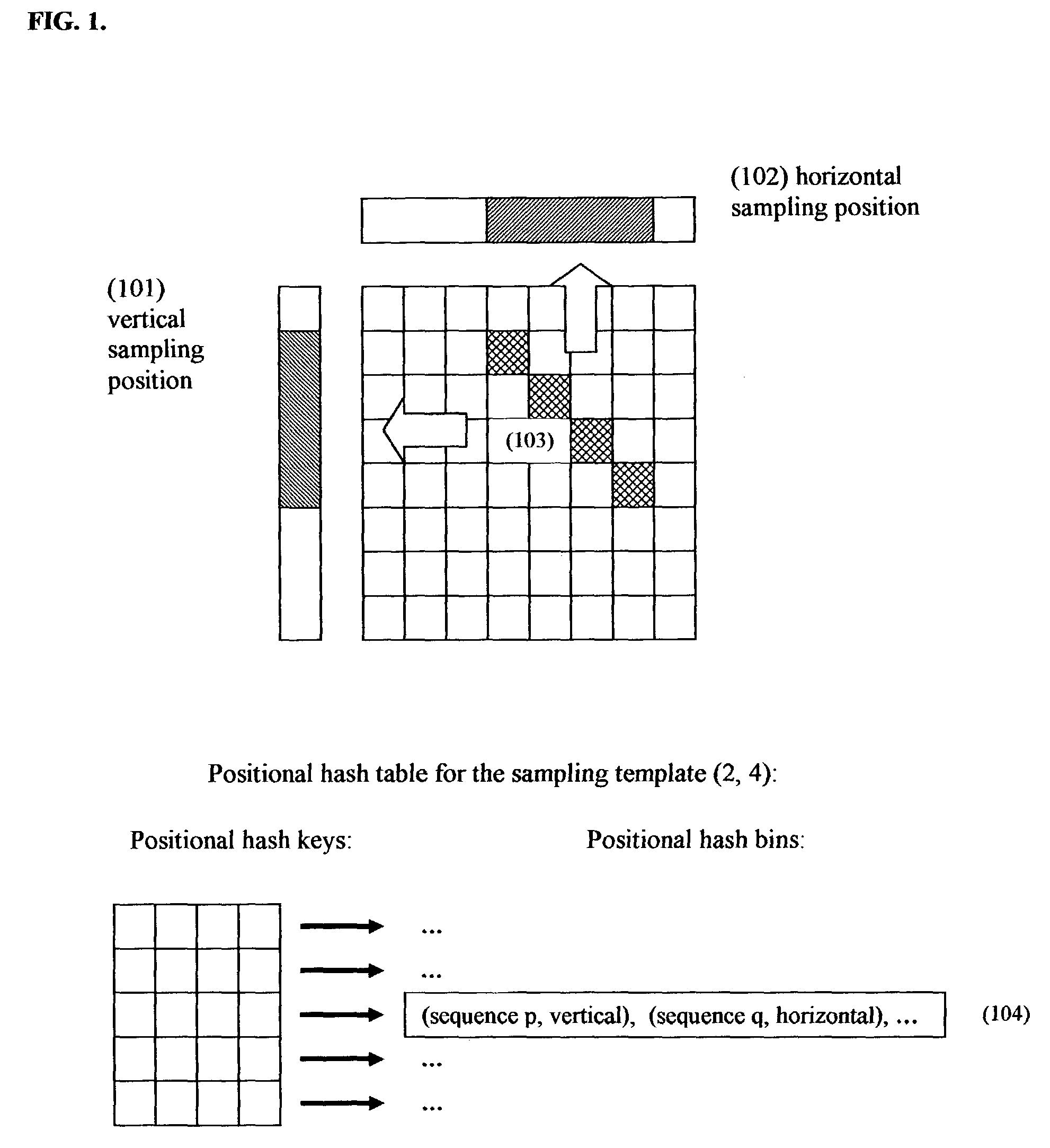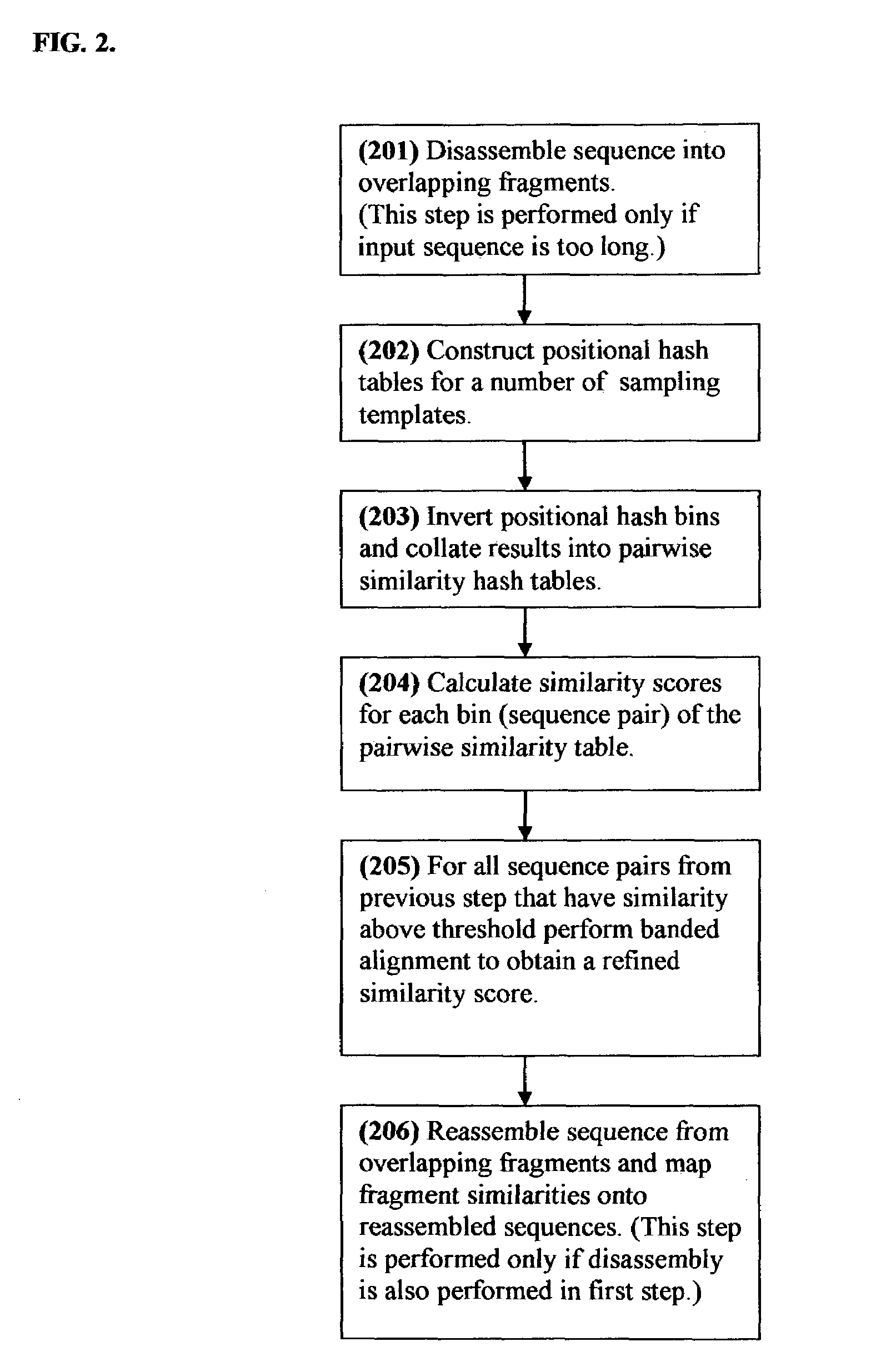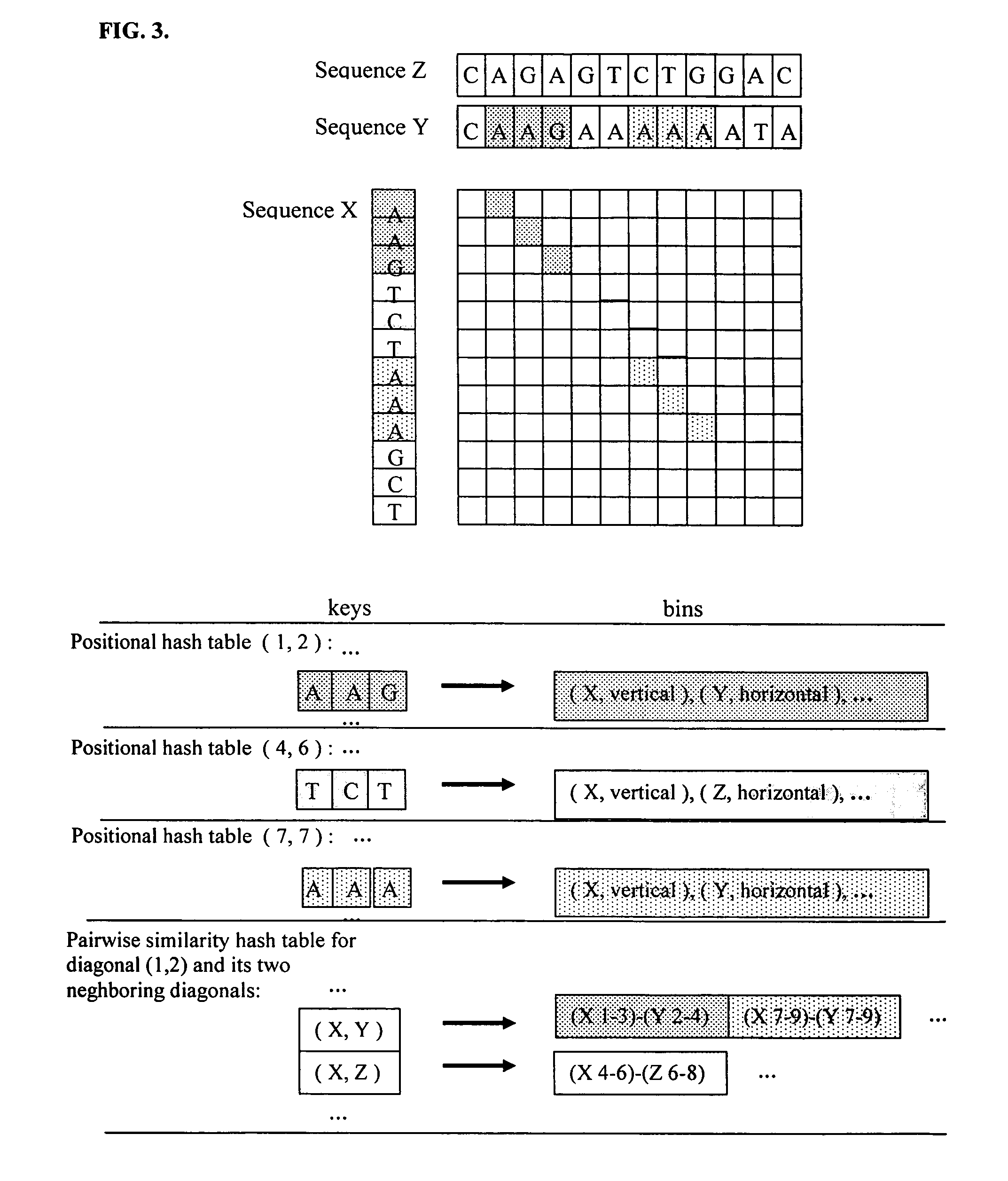Positional hashing method for performing DNA sequence similarity search
a technology of positional hashing and sequence similarity, applied in chemical methods analysis, analogue processes for specific applications, instruments, etc., can solve the problems of implementing this advanced method, consuming computational resources, and unable to achieve large-scale sequence comparison effective methods,
- Summary
- Abstract
- Description
- Claims
- Application Information
AI Technical Summary
Benefits of technology
Problems solved by technology
Method used
Image
Examples
Embodiment Construction
[0025]In contrast to previously proposed hashing-based similarity search methods, where each hash table corresponds to a subset of sequence database, each positional hash table of the present invention corresponds to a sampling template in a two-dimensional matrix, as illustrated in FIG. 1. The sampling template is projected both horizontally and vertically onto horizontal and vertical sampling positions. Each sequence is sampled both in a horizontal and in a vertical sampling position, thus producing two, possibly distinct, hash keys per sequence. The hash keys are derived from the letters in the respective horizontal and vertical projections of the sampling template.
[0026]Consider a situation where a first sequence is sampled horizontally and a second sequence is sampled vertically using the same sampling template. Consider further the situation where the sequence of letters in the horizontal projection of the sampling template onto first sequence is the same as the sequence of le...
PUM
| Property | Measurement | Unit |
|---|---|---|
| CPU time | aaaaa | aaaaa |
| CPU time | aaaaa | aaaaa |
| fixed length | aaaaa | aaaaa |
Abstract
Description
Claims
Application Information
 Login to View More
Login to View More - R&D
- Intellectual Property
- Life Sciences
- Materials
- Tech Scout
- Unparalleled Data Quality
- Higher Quality Content
- 60% Fewer Hallucinations
Browse by: Latest US Patents, China's latest patents, Technical Efficacy Thesaurus, Application Domain, Technology Topic, Popular Technical Reports.
© 2025 PatSnap. All rights reserved.Legal|Privacy policy|Modern Slavery Act Transparency Statement|Sitemap|About US| Contact US: help@patsnap.com



